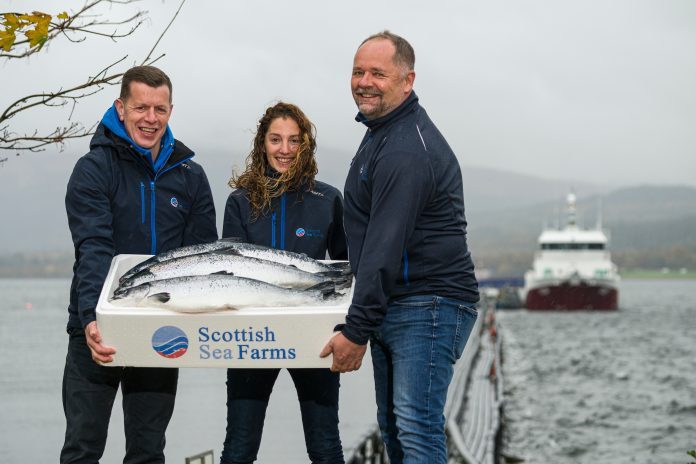New GBP 58 million hatchery RAS hatchery means that fish an average weight of 178g when put to sea.
In a press release, Scottish Sea Farms writes that the first RAS-grown fish have been harvested at its at Barcaldine hatchery.
The fish were transferred a year ago from the GBP 58 million hatchery at Barcaldine to the company’s Loch Nevis C farm for on-growing.
The smolts had an average weight of 178g when put to sea, more than double the weight Scottish Sea Farms would expect to achieve via conventional hatchery methods, and required two months less in the marine environment to reach market size.
Freshwater Manager Pål Tangvik said that because of the hatchery, they are seeing “bigger, healthier smolts” that require less time at sea.
“Thanks to its state-of-the-art recirculating aquaculture system – or RAS for short – we now have much greater control over the key growth factors of water quality, oxygen levels, temperature, light and speed of flow.
“This creates a more stable environment compared to conventional flow-through hatcheries which, due to the fact they draw in freshwater from rivers or lochs, can be subject to changes in weather,” he said.
He said that keep each generation of fish completely separate and bio-secure, meaning it can maintain peak health throughout the freshwater cycle.
‘Combine this with our hugely talented fish husbandry and technical teams, and what we’re seeing is bigger, healthier smolts which not only require less time at sea but are better able to withstand the natural challenges of the marine environment,” added Tangvik.
The 17,500m2 hatchery has the scope to produce up to 10 million smolts annually. Its location on the shores of Loch Creran near Oban means that young salmon can be transferred directly from hatchery to well-boat via a pipeline then transported on to one of the salmon grower’s 42 marine farms around Scotland’s west coast, Orkney and Shetland.
The salmon farmer highlighted that fish welfare and survival were key, with Scottish Sea Farms Managing Director Jim Gallagher adding that: “When it came to transforming our freshwater farming, it seemed only natural that we do so in the greenest way possible: from reducing our use of fossil fuels or finite resources such as freshwater, to provision for our own hydro scheme”.

